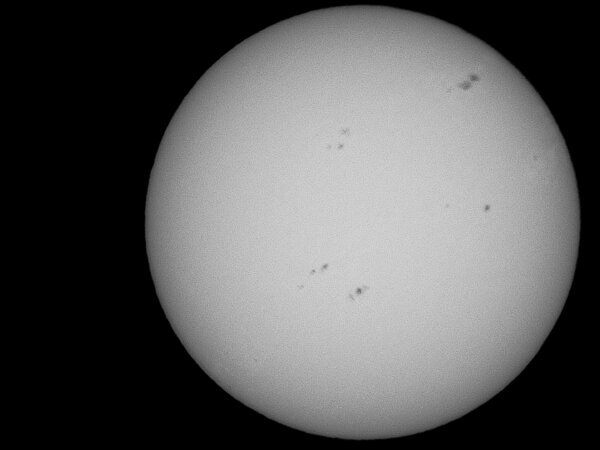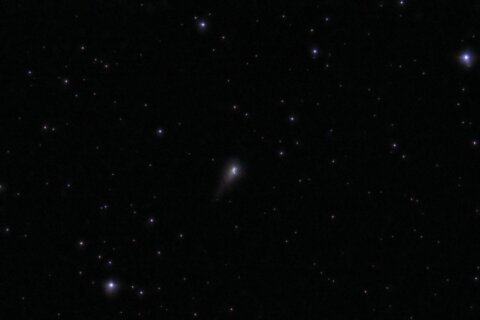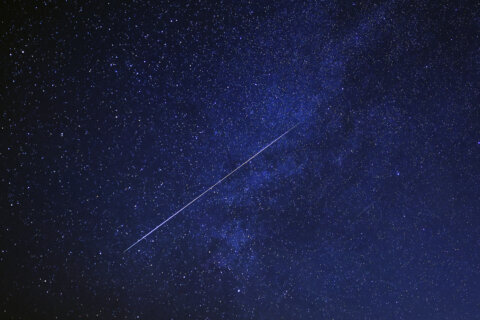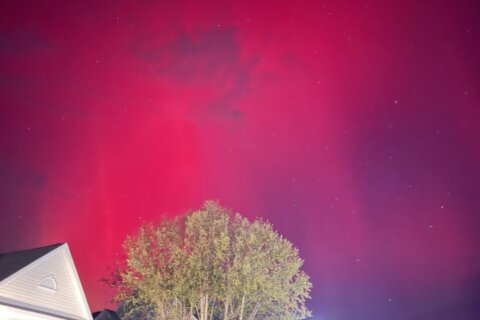The sun, which was my “Top Space Story for 2024,” is adding to its 2024 legacy, and just before the new year.
It’s a beautiful, sunny and windy Monday in the D.C. region. Space weather, like terrestrial weather, is caused by Earth’s interaction with the sun, its star. And the space forecast is about to get a little bumpy.
The National Oceanic and Atmospheric Administration’s Space Weather Prediction Center just announced a G3 (Strong) geomagnetic storm is anticipated:
The following announcement was made by the Space Weather Prediction Center on Monday at about 12:30 p.m.:
“A G3 (Strong) geomagnetic storm watch is in effect for 31 Dec, with a G1 (Minor) watch for 1 Jan. These are in anticipation of a pair of Earth-directed coronal mass ejections (CME). The G1 Watch for 1 Jan is being considered for upgrade to a G2 Watch. SWPC forecasters have a fair level of confidence in some measure of Earth effectual components and general timing windows of these two particular CMEs, however, as is usual with these events, intensity is less certain. We will not know the true potential of geomagnetic disturbance levels of response until the CME(s) arrive 1 million miles from Earth (when they will be about 30-60 minutes from reaching our planet) and their structure and intensity can be measured by our solar wind observatories – NOAA DSCOVR and NASA ACE spacecraft. Also, neither CME is expected to be a direct hit, which also makes forecast of intensity more difficult. Continue to follow our webpage for the latest forecasts and information.”
The following impacts are expected from a G3 storm, per the Space Weather Prediction Center:
Potential Impacts: Area of impact primarily poleward of 50 degrees geomagnetic latitude.
Power systems: Voltage corrections may be required, false alarms triggered on some protection devices.
Spacecraft operations: Surface charging may occur on satellite components, drag may increase on low-Earth-orbit satellites, and corrections may be needed for orientation problems.
Other systems: Intermittent satellite navigation and low-frequency radio navigation problems may occur, HF radio may be intermittent, and aurora has been seen as low as Illinois and Oregon (typically 50° geomagnetic lat.).
The sun is currently in Solar Cycle 25 and solar maximum, which produces more sunspots and solar events, which produce space weather events, such as Monday’s predicted level G3 geomagnetic storm.
The NOAA Space Weather Prediction Center aurora dashboard provides a two-day prediction of aurora. Midlatitude U.S. states and Europe have a chance of seeing aurora Monday night and before dawn Tuesday. The current predicted peak is Tuesday, 1 a.m. to 7 a.m., but the D.C. region’s more southerly location makes it more “iffy.”
However, it is still worth taking a look to the north from a dark sky location with a clear northern horizon to see wheher any aurora are visible.
Use a camera or smartphone that can take exposures of several seconds — including using “Night Sky” or “Low Light” settings if your camera has them — of the northern horizon. Steady the camera or use a tripod for best image results. The camera may capture aurora that your eyes did not.
The moon will not be a factor as it is a “Dark Moon” Monday — the second new moon in December.
Spaceweather.com has a daily snapshot of what the space weather in the solar system is going to be like and a current image of the sun. Monday’s posting explains what happened on the sun the past few days to cause our current space weather.
My images of Monday’s sun show sun spots AR3936 and AR3932.

Our best bet is to monitor the NOAA and space related social media sites for updates. With our terrestrial weather being such a factor in our daily lives here in the D.C. area, and frankly, the rest of the world, we are also directly affected by space weather, which can produce a variety of events, including geomagnetic storms and aurora.
You listen to WTOP for “traffic and weather together on the 8s.” Maybe now you will want to include a check of space weather, too, as part of your daily weather routine.
Follow Greg Redfern on Facebook, Bluesky and his daily blog to keep up with the latest news in astronomy and space exploration.
Get breaking news and daily headlines delivered to your email inbox by signing up here.
© 2024 WTOP. All Rights Reserved. This website is not intended for users located within the European Economic Area.







